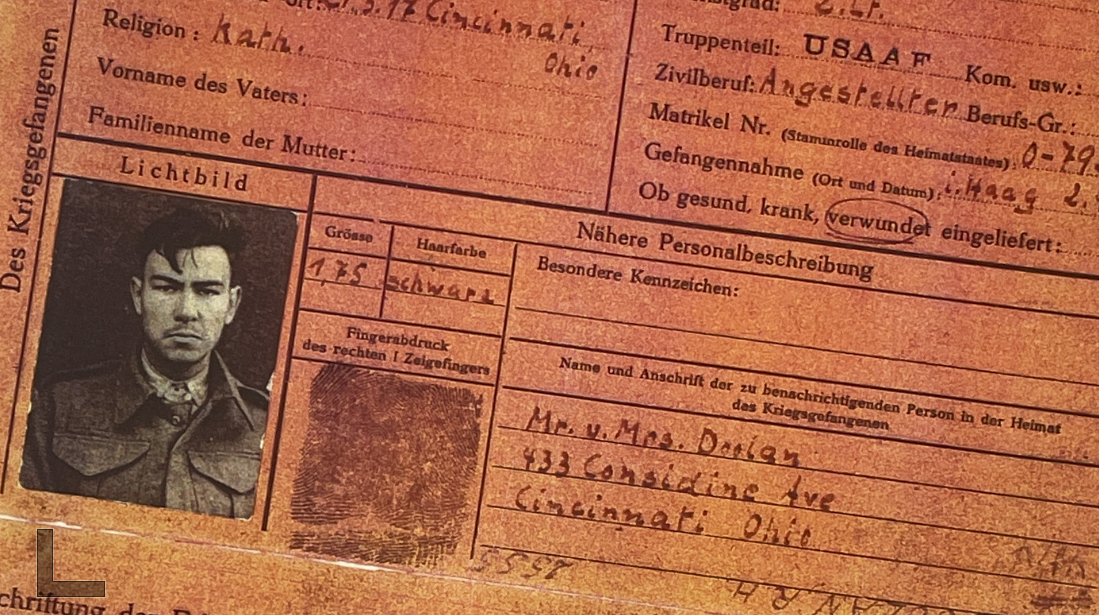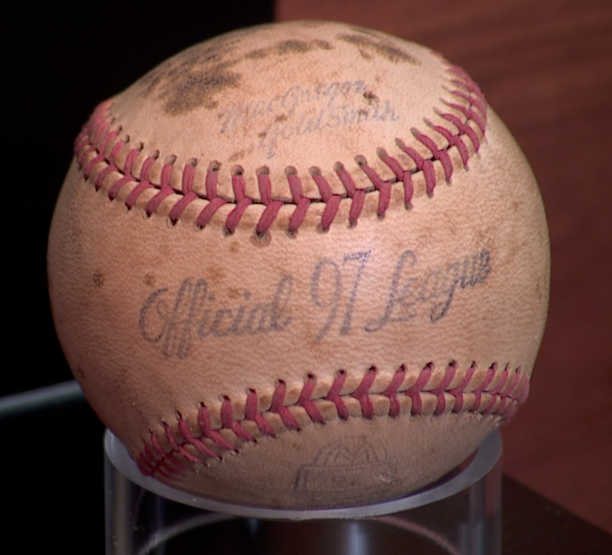CINCINNATI — Cincinnati is a baseball town. It’s where the first professional big league team calls home.
In the early- to mid-1900s, there was one local brand that was the gold standard for making baseballs: P. Goldsmith Sons Co.
“There’s not that many people that know the Goldsmith name,” said Greg Koch, owner of Koch’s Sporting Goods (established in 1888) in downtown Cincinnati.
While some may not remember the iconic name, Cody Hefner with the Cincinnati Museum said many might remember seeing it on an old glove, bat or baseball. Goldsmith developed the stitching found on baseballs today. Patented on March 7, 1876 in Covington, it was a technology that forever changed how baseballs are made.
But the company's impact wasn't just on the field. They transcended the game of baseball with their efforts during World War II.
World War II veteran 2nd Lieutenant Robert Doolan, now 105 years old, grew up in Price Hill. He was a navigator in the Army Air Corp during the war and in 1943, on his 13th mission, Doolan’s plane was shot down over Holland.
“It destroyed the back of the ship, I got three little wounds,” Doolan said.

His B-17 plane landed in a Dutch field, and after evading the Gestapo on foot for almost three weeks, his luck ran out.
“Instantaneously, I’ve got six men on me, three Gestapo, and three Schutzstaffel," Doolan said. "Bang, bang, they threw handcuffs on me."
Doolan became a prisoner of war and was sent to Stalag Luft III.
“Which was a huge prisoner camp,” Doolan said.

Doolan’s memory of his time in Stalag Luft III is precise.
To pass the time during his 20 months as a prisoner of war, Doolan played soccer and baseball. The game was less important than the equipment: The baseballs came from Goldsmiths in Cincinnati. On the surface, they were a harmless way to keep American prisoners of war happy, but at its core, Goldsmith put radio parts in baseballs so they could communicate with the United States, Hefner said.
“We wanted some radio parts, and there was a little ball in the center. And that’s hollow,” Doolan said.

Because of Goldsmith’s top-notch reputation, the U.S. military asked the sporting goods company to replace the rubber core of the baseball with an aluminum capsule. Inside the capsule were ham radio parts. The baseballs were then regularly shipped to Stalag Luft III. Prisoners working in the mail room looked for a secret marking on their packaging.
“Dave Pollock from Cincinnati was one of the men that helped," Doolan said. "When he saw a package with the tax stamp tilted ... there was a map in there. He would manage to keep the Germans from opening that one."
Radios inside baseballs, along with playing cards with hidden maps, aided prisoners in communicating with the U.S. It was all a highly classified mission known as P.O. Box 1142, never spoken about publicly until 1990.
“Another writer discovered a lot of this stuff and published it and made the army very unhappy,” Doolan said.
Although published, it was still a surprise even to the experts.
“It’s unexpected to think that baseballs were used in that way,” Hefner said. "And to think that happened right here in your own backyard."
“I had no idea that was going on,” Koch said.
With the help of companies like Goldsmith, Stalag Luft III went on to be known as The Great Escape camp. Bob Doolan never escaped, but he was liberated after 20 months by the allied forces.
From Cincinnati to Nazi Germany: America’s pastime helped save America’s future.




















